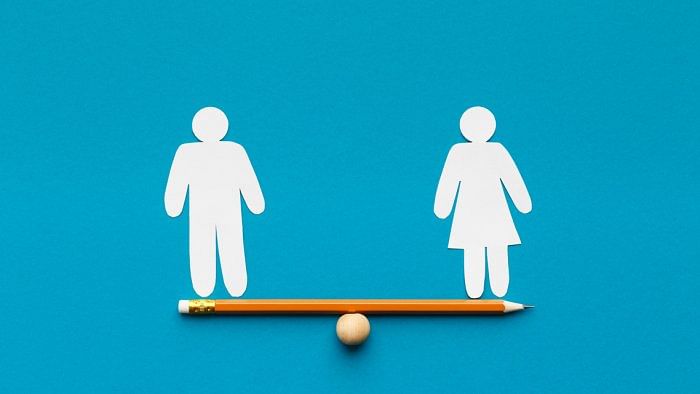
Gender-linked prejudices continue to obstruct women’s advancement in India’s labour market, as shown by the India Discrimination Report 2022. According to the report, women still face high degree of discrimination in access to employment, as well as earning parity, irrespective of religion, caste subgroups, and/or urban-rural divide.
The report also reveals employers’ reluctance to hire women and a glaringly obvious gender pay gap.
In urban areas, 60 per cent of men are salaried or self-employed, against 19 per cent women. Similarly, 53.8 per cent of rural men above the age of 15 are engaged in regular employment as against only 23.3 per cent of women.
Interestingly, the report reveals that in rural areas, by having an education, a woman’s probability of participating in a salaried job reduces. The report suggests that women from such households are less likely to seek or get jobs and even if they do get jobs, they withdraw from it due to socio-cultural factors.
Men have ‘advantages’
Although some employers, the report states, claim to be open and fair, these employers also say they have to employ men over women because of late hours of work, travel to remote areas and other such conditions which they think make women physically and socially vulnerable.
This partiality towards the male is the biggest factor behind the gender pay gap and is a visible discrimination in both urban and rural areas.
Men have a clear advantage, earning an average of Rs 19,779 in regular or salaried employment as against women earning Rs 15,578 in urban areas. The difference is even more shocking in urban self-employment, with men earning nearly 2.5 times higher at Rs 15,996, as against women’s wage of Rs 6,626. In casual labour, men’s average wage in an urban setting is Rs 9,018 as against women’s Rs 5,709.
Rural setting is worse
The disparity is not just unchanged in rural areas, it gets worse. Women make Rs 9,757 against men’s Rs 13,600 in regular jobs. Self-employed rural women earn an average of Rs 4,383 against self-employed rural men’s wage of Rs 9,348. In casual jobs, men’s average wage of Rs 7,463 towers over women’s wage of Rs 4,605.
In regular or salaried jobs, urban women are hired at much lower levels, denied promotions due to social prejudices of employers. The pay gap seems to taper with women above the age of 25, which suggests that younger women face the most discrimination, but with experience, they learn to bargain for better pay.
The data in the discrimination report is till 2020, right before the Covid-19 pandemic broke out—changing and upending jobs across the world.
How were women, already in the throes of discrimination and struggling to find access to jobs, impacted by this?
Watch this space for the next part of this story, based on the India Discrimination Report, 2022.